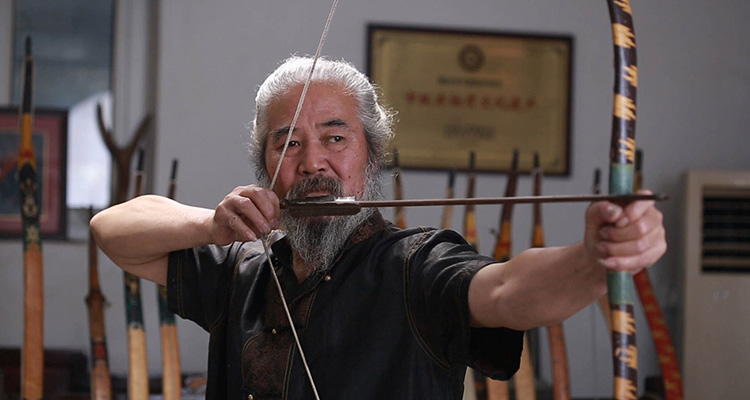Beijing Juyuanhao Bow Workshop: Royal Archery
1. What Is Juyuanhao Bow Workshop?
Juyuanhao Bow Workshop, founded in 1721, is often called “China’s royal bow living fossil.” Located in Beijing’s Tongzhou District, it is the only workshop preserving the complete traditional bow-making process. Recognized as a national intangible cultural heritage since 2006, the workshop combines craftsmanship, culture, and philosophy into every bow.
Walking into the workshop, visitors are immediately greeted by the distinctive scent of sinew glue and wood, with hand-crafted bows glowing warmly under the lights. Each piece is a unique art object, showcasing the elegance of curved Chinese composite bows.

2. A Glimpse into Its Storied Past
The story of Juyuanhao begins in 1721 during the Qing Dynasty. It was one of seventeen royal workshops, commissioned to produce bows for the imperial court. Emperor Qianlong personally inscribed the “Juyuanhao” plaque, cementing its royal status.
In the late Qing Dynasty, with the introduction of firearms, bows lost their prominence. Only Juyuanhao continued, preserving the craft. In the 1950s, Chairman Mao even commissioned a bow and arrows from the workshop, which were made with great care over months using treasured water buffalo horns.
By 1998, the tenth-generation heir Yang Fuxi revived the workshop in a small Beijing house. Today, the craft continues under him and his son, the eleventh-generation heir.

3. Crafting the Royal Bow: Techniques and Materials
Juyuanhao’s bow-making is a complex art combining woodworking, painting, and traditional techniques.
Materials & Tools:
- Water buffalo horn from Thailand and Vietnam
- Sinew glue made from fish bladders
- French goose feathers for arrows
- Locally sourced wood in Beijing
- Traditional tools for shaping bows and preparing sinew
Process:
The creation has two stages: “white work” (shaping the bow, gluing sinew, assembling the core) and “painting work” (decorating with birch bark for moisture protection and adding traditional motifs like “Fu Lu” and longevity symbols). Laying the sinew alone can take at least a week per layer, repeated three times or more.
A single bow takes about 18 months to complete. The workshop follows the old rule: a bow must endure all four seasons to be considered finished, as wood and sinew expand and contract with climate. Yang Fuxi personally draws each bow daily to monitor adjustments.

4. Experiencing the Art of Archery
Visitors can observe traditional archery demonstrations or even try shooting under guidance. Yang Fuxi uses a deer antler thumb ring and draws with precision, showing the beauty and discipline of Chinese archery.
Juyuanhao bows are more than weapons—they are artworks, combining curved elegance, vibrant decorations, and the perfect blend of horn, sinew, and bamboo. Traditional archery emphasizes “observing virtue through shooting”, making the experience both a cultural and personal journey.

5. Visiting Juyuanhao: A Cultural Journey
The main workshop is in Tongzhou District, with a store at Panjiayuan Market managed by Yang Fuxi’s wife. Only 40–60 bows are produced annually, each sold with a set of arrows, prices ranging from a few thousand to tens of thousands of yuan. Due to the long production cycle, orders can be booked years in advance.
For visitors to Beijing, finding this hidden workshop offers a rare opportunity to touch history and experience Chinese archery firsthand, connecting with a 300-year-old cultural heritage.


